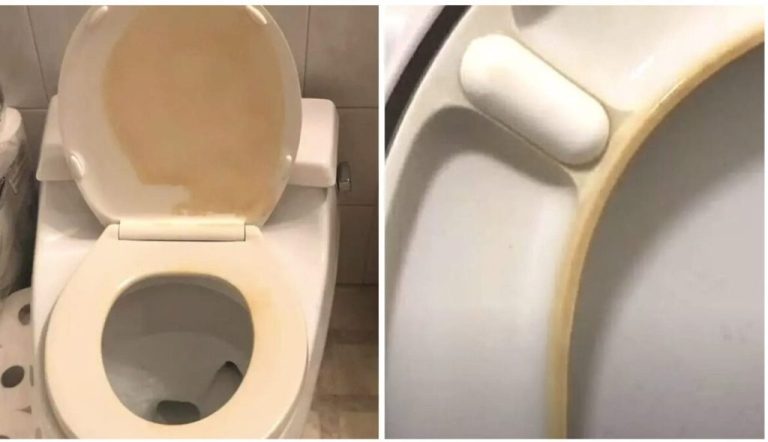ADVERTISEMENT
### **Causes of Yellow Stains on the Toilet Seat and in the Toilet Itself**
Yellow stains in your toilet and on the toilet seat can be unsightly and difficult to remove. Whether you’ve noticed them for the first time or they’ve been lingering for a while, it’s important to understand what causes these stains and how to address them. Here, we will explore the common causes of yellow stains in the toilet and offer solutions to help you restore your bathroom’s cleanliness.
—
### **Common Causes of Yellow Stains in the Toilet**
#### **1. Hard Water Stains**
Hard water is one of the leading culprits when it comes to yellow stains in toilets. Hard water contains high levels of minerals like calcium and magnesium, which can leave behind deposits over time. These minerals build up on the porcelain surface of the toilet, creating a yellowish or brownish film. The stains are often more noticeable on areas that come in direct contact with water, such as the toilet seat, rim, and bowl.
**Solution:**
To remove hard water stains, use a toilet bowl cleaner designed to break down mineral deposits, or apply a mixture of white vinegar and baking soda. Let it sit for about 30 minutes before scrubbing with a toilet brush. Regular cleaning with a descaling agent can help prevent these stains from reappearing.
#### **2. Urine Stains**
Yellow stains on the toilet seat, rim, or even inside the toilet bowl can also be caused by urine. Over time, uric acid in urine can react with minerals in the water, leaving yellow marks behind. This is especially common in households with male members or small children who may miss the target, causing urine to splash onto the seat or other areas.
**Solution:**
For stains caused by urine, use a cleaning solution containing bleach or hydrogen peroxide, as both are effective in removing organic stains. Regularly wipe down the seat and other surfaces after each use to prevent buildup. For persistent stains, a specialized cleaner designed for urine removal may be required.
#### **3. Age of the Toilet**
Older toilets with worn-out or cracked surfaces are more susceptible to staining. The surface of older porcelain may not be as smooth, allowing more mineral buildup and bacteria to cling to it. This can lead to the development of yellowish stains over time, even with regular cleaning.
**Solution:**
If your toilet is particularly old and the stains seem ingrained, it might be time to replace it. Newer toilets often have better coatings that are more resistant to stains and bacteria buildup.
**4. Mold and Mildew**
While mold and mildew are typically associated with darker, more noticeable stains, certain types of mold can leave a yellowish or greenish hue on toilet seats and bowls. This is often due to moisture and lack of proper ventilation in your bathroom. Mold thrives in warm, damp environments and can cause discoloration in various parts of the bathroom, including the toilet.
For Complete Cooking STEPS Please Head On Over To Next Page Or Open button (>) and don’t forget to SHARE with your Facebook friends
ADVERTISEMENT
